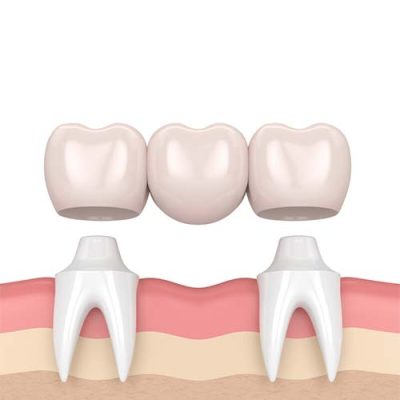Dental Bridges
Dental bridges are a traditional way to replace a missing tooth.
What is a dental bridge?
A common solution to the problem of tooth loss is a bridge, which comprises of replacement tooth or teeth connected to crowns on either side of the space.
The bridge is fused to the teeth next to the gap. This means that the bridge replaces the absent tooth and prevents any further movement of the adjacent teeth.

How is a dental bridge put in place?
The process followed for the creation and insertion of a bridge is very similar to that of a crown. Two appointments are required. Firstly, the dentist will get the teeth alongside the space ready for crowns and a mould of the new teeth is generated. A temporary bridge is fitted in the mouth in the meantime. Secondly, once the permanent bridge has been created, the dentist will fit the bridge and fine tune it to its perfect position before fixing it in place.
How long do dental bridges last?
Bridges generally last many years and are resilient to normal diets. However, it is possible that bridges may need to be changed or re-secured due to the strains of standard wear.
Are dental implants better than a dental bridge?
While there are benefits of a dental bridge, dental implants are now preferred, where possible, over dental bridges. Dental implants remove the need to damage perfectly good teeth to support the dental bridge.
Your treatment options with Dr Finkelstein
Dental bridges are more and more being replaced with dental implants. Dr Finkelstein explains in this video the benefits of dental implants compared with a traditional dental bridge.
Payment Options at Dr Finkelstein Dentist

- Visa & Mastercard - We do not charge you merchant fees on credit cards.
- Health Funds - We offer pay-the-gap only when you bring your health fund card along.
- Afterpay - Get treated now, pay later!
Want to talk about your missing teeth options?
Get a professional opinion with Dr. Finkelstein to explain the possible treatments for your missing tooth.
Please complete the below form to chat with one of our friendly team. Once we receive your message, we will be in touch to answer any questions you have and book you in for an appointment. Alternatively, you can call us on (02) 9262 7778 or use our Online Chat between 8:00am until 5:00pm, Monday to Friday.
Get into the Finkelstein Files

Are Dental Crowns Permanent? Understanding Their Lifespan and Maintenance
Many people wonder whether dental crowns, used to restore weak or damaged teeth, are a permanent solution. The answer depends on various factors, including the

How Long Do Crowns Last? Expert Insight into the Lifespan and Maintenance of Dental Crowns Near You
Dental crowns, a renowned remedy for fortifying and enhancing the aesthetics of compromised teeth, stand as a prevalent choice among individuals seeking restoration. Curious about

TMJ Treatment Through Lifestyle Changes: Soft Foods, Stress Management, and More
Living with Temporomandibular Joint (TMJ) pain can significantly affect your daily routine, from eating to sleeping, making it crucial to find effective TMJ treatment. If



